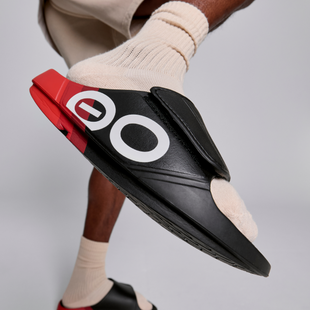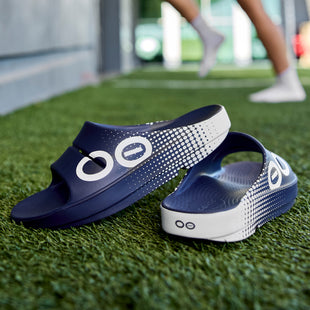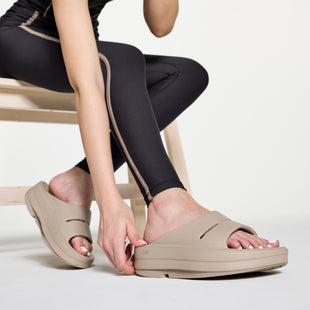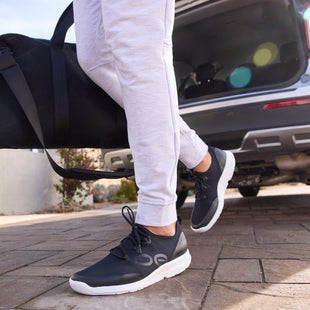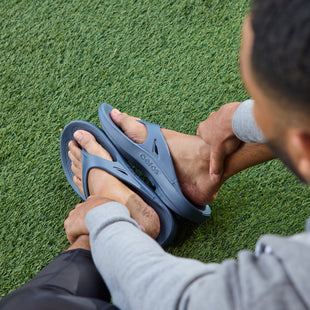Your feet have absorbed the impact of tens of thousands of steps. Even with the best running shoes, every stride places pressure on the bones, joints, muscles and connective tissues in your feet. Over the course of 26.2 miles, it adds up.
Understanding the pain
Foot pain after a marathon can take a few different forms. Some runners feel a deep ache in the arches or the ball of the foot. Others experience soreness in the heels or bruising around the toes. Blisters, swelling and black toenails are also common – and while unpleasant, most are relatively harmless with the right care.
The key is to treat your feet with the same attention you’d give your quads or calves. They’ve done the same amount of work – and they need the same level of recovery support.
Rest with support, not strain
The worst thing you can do for sore feet after a marathon is leave them unsupported. Going barefoot or walking around in flat, unsupportive shoes can make the discomfort worse and delay healing.
That’s why many experienced runners change into recovery footwear as soon as possible after the race. Unlike standard sandals or flip-flops, recovery shoes are designed to cradle the arch, reduce pressure on sore areas, and absorb further impact. OOFOS, for example, uses a proprietary foam technology that’s been shown to reduce load on the ankles and feet – making them a go-to option for post-race comfort.
It’s not just about comfort. Supporting your feet during recovery can help you move better, sleep more easily, and shorten the time before you feel like yourself again.
Cool, elevate and recover
Swelling is common after a long race. Elevating your feet for short periods can help reduce inflammation, especially in the first 24–48 hours. Icing may also be useful for areas that feel particularly tender, but it’s best used sparingly and never directly on the skin.
The goal is to encourage circulation and avoid placing further stress on already fatigued tissues. Short walks in supportive footwear, gentle stretching, and time off your feet all play a part.
Your feet will thank you
Sore feet after a marathon aren’t a sign something went wrong – they’re a sign you put in the work. But recovery starts from the ground up. Give your feet the same care you give the rest of your body, and you’ll set yourself up to recover stronger.
And when it comes to what you wear next, your post-race trainers might just need a break too. A pair of OOFOS could be the softest step forward.


